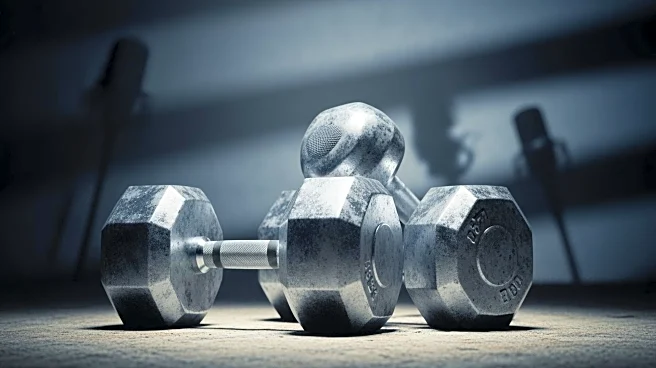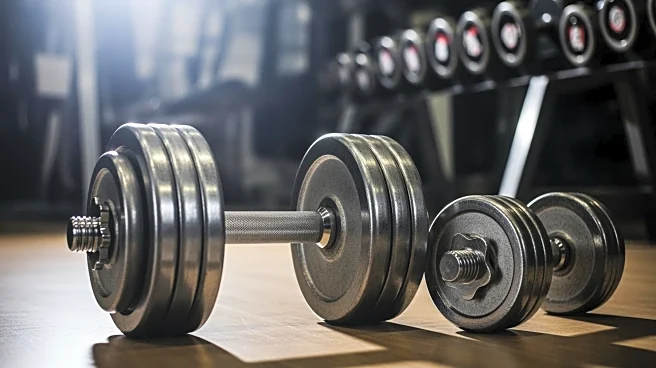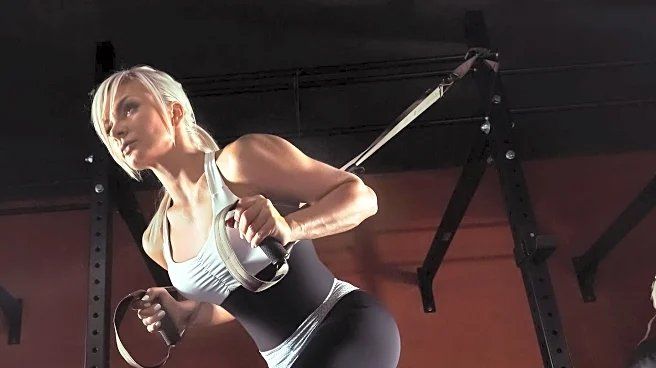What's Happening?
Tom Haviland, an Australian strongman, has captured the attention of the internet and notable figures like Joe Rogan, who has referred to him as 'possibly the strongest man alive.' Standing at 6 feet 8
inches and weighing 157 kilograms, Haviland is known for his unconventional training methods, often utilizing homemade equipment and training outdoors. His impressive strength feats include a 600-pound bench press, a 1003-pound deadlift, and a 1200-pound yoke walk. Haviland's passion for strength training began in his childhood, growing up in the Australian bush where he engaged in physical activities like lifting logs and stones. Despite his growing popularity, Haviland maintains a humble demeanor, expressing contentment with his simple lifestyle and reluctance to seek the limelight.
Why It's Important?
Haviland's recognition by Joe Rogan and the strongman community highlights the growing interest in unconventional training methods and the appeal of raw, natural strength. His story underscores a shift in fitness culture towards embracing diverse training environments and techniques. For the strongman community, Haviland represents a potential contender for international competitions like the World's Strongest Man, where his natural strength and unique training could set new benchmarks. His approach also resonates with fitness enthusiasts seeking authenticity and simplicity in their training routines, potentially influencing trends in the fitness industry.
What's Next?
As Haviland continues to gain recognition, there may be opportunities for him to participate in major strongman competitions, which could further elevate his profile. The strongman community and fans might anticipate his entry into events like the World's Strongest Man, where his performance could challenge existing records. Additionally, his story could inspire other athletes to explore unconventional training methods, potentially leading to a broader acceptance of diverse fitness practices.
Beyond the Headlines
Haviland's journey raises questions about the commercialization of fitness and the value placed on traditional gym environments. His success with minimal equipment and a focus on natural strength challenges the notion that high-tech facilities are necessary for achieving peak physical performance. This could lead to a reevaluation of fitness industry standards and a greater appreciation for grassroots training methods.











